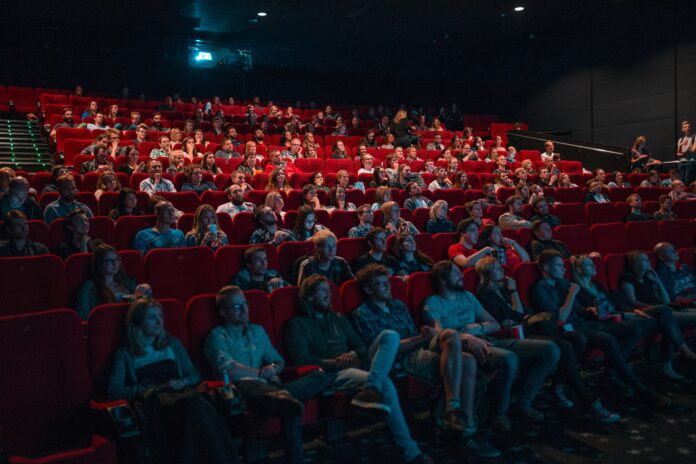Post-credits scenes have become a staple in the world of cinema, providing an extra bit of excitement and anticipation for viewers who stick around until the very end. These scenes, often known as stingers or credit cookies, have become a popular way for filmmakers to tease upcoming sequels, introduce new characters, or provide a final twist to the story. Post-credits scenes have become so ingrained in popular culture that audiences now expect them when watching certain types of movies, particularly those within the superhero genre. Let’s delve into the world of post-credits scenes, exploring their significance, evolution, and impact on the movie industry.
Post-credits scenes serve as an additional narrative tool that extends the cinematic experience beyond the main storyline. Typically, they appear after the credits have rolled, encouraging the audience to remain seated and rewarding their patience. These scenes often provide a sense of closure or set up future events, creating intrigue and generating buzz among viewers. Post-credits scenes have the power to leave audiences in awe, gasping in surprise, or frantically speculating about what lies ahead.
One example of a memorable post-credits scene is from the Marvel Cinematic Universe (MCU). In the 2012 film “The Avengers,” directed by Joss Whedon, audiences were treated to not one, but two post-credits scenes. The first scene shows the villainous Thanos, played by Josh Brolin, making his grand entrance, setting the stage for his role as the overarching antagonist in subsequent films. The second scene features the beloved superhero team eating shawarma in silence, a humorous moment that provided a lighthearted contrast to the intense battles that had unfolded throughout the movie. These post-credits scenes left audiences buzzing with excitement and eagerly anticipating the next installment in the franchise.
Post-credits scenes have evolved over time, adapting to the changing landscape of the movie industry and the expectations of audiences. What was once a rare occurrence has now become a standard feature in certain genres, especially superhero films. Marvel Studios, in particular, has become renowned for its meticulously crafted post-credits scenes, often weaving together multiple storylines and hinting at future plot developments. These scenes have created a sense of cohesion and interconnectedness within the MCU, transforming it into a sprawling narrative tapestry that extends across multiple films and television series.
However, it’s not just superhero movies that employ post-credits scenes. Other genres have also embraced this technique, using it to tease sequels or provide a final twist. For example, the 2013 film “The Conjuring” concludes with a chilling post-credits scene that sets up a spin-off series featuring the creepy doll Annabelle. This unexpected addition caught many viewers off guard and heightened their anticipation for the subsequent films in the franchise. Similarly, the 2017 horror movie “Get Out,” directed by Jordan Peele, included a post-credits scene that added a layer of ambiguity to the ending, leaving audiences questioning the true nature of the story.
Post-credits scenes have had a profound impact on the movie industry, influencing how studios approach storytelling and marketing. These scenes have become valuable tools for building anticipation and generating buzz for upcoming projects. By teasing future installments or introducing new characters, post-credits scenes keep audiences engaged long after they have left the theater, fostering a sense of community and shared excitement among fans. In the age of social media, post-credits scenes have also become hot topics for online discussions, fueling speculation and fan theories that further extend the reach of the movie.
Moreover, post-credits scenes have opened up new avenues for cross-promotion and world-building. In an era of cinematic universes and shared storytelling, these scenes provide an opportunity to connect different films and franchises, creating a sense of continuity and interconnectivity. For instance, the post-credits scene in the 2014 film “Guardians of the Galaxy” featured the character Howard the Duck, a nod to the wider Marvel Comics universe. This brief cameo not only delighted comic book fans but also hinted at the potential for crossovers and interconnected storylines in future films.
However, it’s essential to note that not all post-credits scenes are created equal. While some are meticulously planned and integral to the overarching narrative, others feel tacked on or serve as mere fan service. The quality and impact of a post-credits scene can greatly vary depending on the filmmakers’ intentions and execution. A well-crafted post-credits scene can leave a lasting impression, generating excitement and setting the stage for future adventures. On the other hand, a poorly executed scene may feel forced or disconnected from the main story, ultimately leaving audiences disappointed or confused.
In recent years, post-credits scenes have even expanded beyond the confines of movies and into the realm of television streaming platforms. Shows such as “Stranger Things” and “The Mandalorian” have embraced the concept of post-credits scenes, using them to tease upcoming seasons or provide additional context to the story. This convergence of mediums further blurs the line between film and television, creating a more immersive and interconnected viewing experience for audiences.
Post-credits scenes have become an integral part of modern cinema, offering a tantalizing glimpse into what lies ahead and fostering a sense of community among fans. Whether they serve as teasers for sequels, provide closure to a storyline, or introduce new characters, post-credits scenes have the power to leave a lasting impact on viewers. These scenes have evolved and adapted to the changing landscape of the movie industry, becoming an effective tool for storytelling and marketing. As the world of cinema continues to evolve, post-credits scenes are likely to remain a beloved and anticipated feature, keeping audiences engaged and eagerly awaiting the next adventure.
Furthermore, post-credits scenes have also given rise to a new form of storytelling experimentation. Filmmakers have begun to use these scenes as a way to subvert expectations or deliver unexpected twists. For example, in the 2016 superhero film “Deadpool,” the post-credits scene features the titular character poking fun at the concept of post-credits scenes themselves. Deadpool humorously comments on the audience’s expectation of a big reveal or teaser, ultimately subverting the traditional purpose of a post-credits scene. This clever twist not only added a humorous touch but also showcased the character’s self-awareness and meta-commentary, further engaging viewers.
Additionally, post-credits scenes have proven to be a valuable marketing tool for film studios. In an era of intense competition and saturation in the movie industry, these scenes generate excitement and anticipation, driving ticket sales and ensuring repeat viewings. By strategically placing post-credits scenes in highly anticipated films, studios can create a buzz that extends beyond the initial release, keeping audiences invested in the franchise or series. This marketing strategy also extends to the online realm, where post-credits scenes often become viral sensations, generating millions of views and shares on social media platforms.
The impact of post-credits scenes is not limited to the movie industry alone. It has influenced other forms of media, including television series, video games, and even commercials. Television shows such as “Marvel’s Agents of S.H.I.E.L.D.” and “Arrow” have embraced the concept of post-credits scenes, using them to tease future episodes or cross over with other series. Video games, too, have incorporated post-credits scenes to tease upcoming sequels or additional downloadable content, providing players with a sense of continuation and anticipation. Even commercials have jumped on the post-credits scene bandwagon, creating mini-stories or hidden Easter eggs after the main advertisement, further engaging viewers and leaving a lasting impression.
The popularity and widespread adoption of post-credits scenes have not been without criticism. Some argue that these scenes can feel like unnecessary add-ons or cheap ploys to keep audiences in their seats. Detractors claim that post-credits scenes can disrupt the flow and pacing of a film, detracting from the main story or diluting its impact. Others argue that post-credits scenes contribute to a culture of instant gratification, where viewers are more interested in what comes next rather than appreciating the film they have just watched. While these criticisms hold some validity, it is important to recognize that post-credits scenes, when done well, can enhance the viewing experience and provide additional layers to the storytelling.
Looking ahead, the future of post-credits scenes remains bright. As filmmakers continue to push the boundaries of storytelling, these scenes will likely evolve and take on new forms. They may become more interactive, allowing audiences to engage with the narrative or make choices that impact the outcome. Alternatively, advancements in virtual reality and augmented reality technologies could bring post-credits scenes into the realm of immersive experiences, allowing viewers to step into the world of the film and explore its secrets firsthand. The possibilities are endless, and as long as there are stories to be told, post-credits scenes will continue to captivate and enthrall audiences around the world.
In conclusion, post-credits scenes have become an integral part of the cinematic experience, providing a platform for additional storytelling, marketing, and audience engagement. From their humble beginnings as rare surprises to their current status as expected features, post-credits scenes have evolved and adapted to meet the demands of the movie industry and the expectations of viewers. They have left indelible marks on popular culture, generating excitement, speculation, and discussion long after the credits have rolled. With their ability to tease future events, surprise audiences, or add a touch of humor, post-credits scenes have become an art form in their own right, leaving a lasting impact on the world of cinema.


















